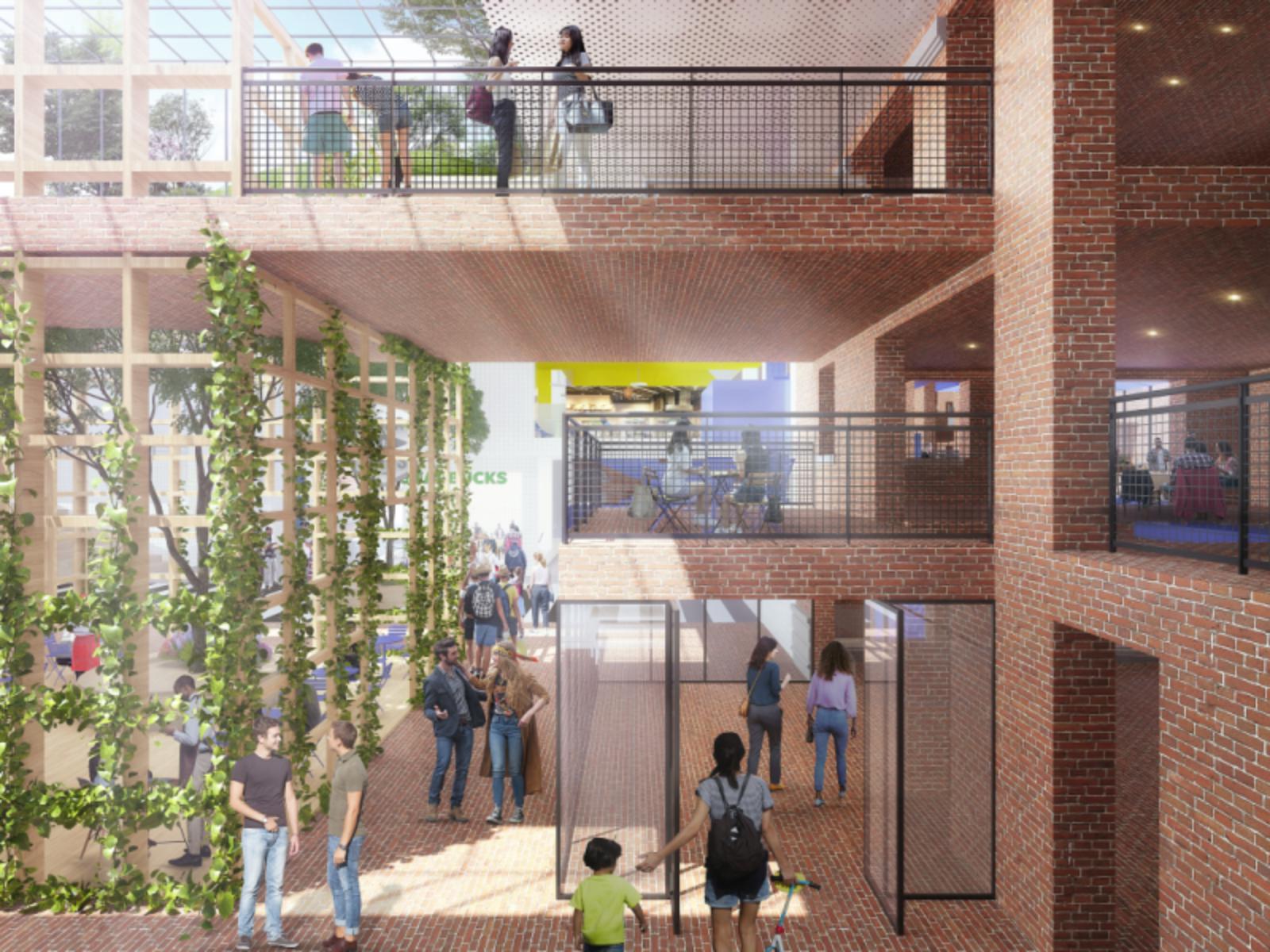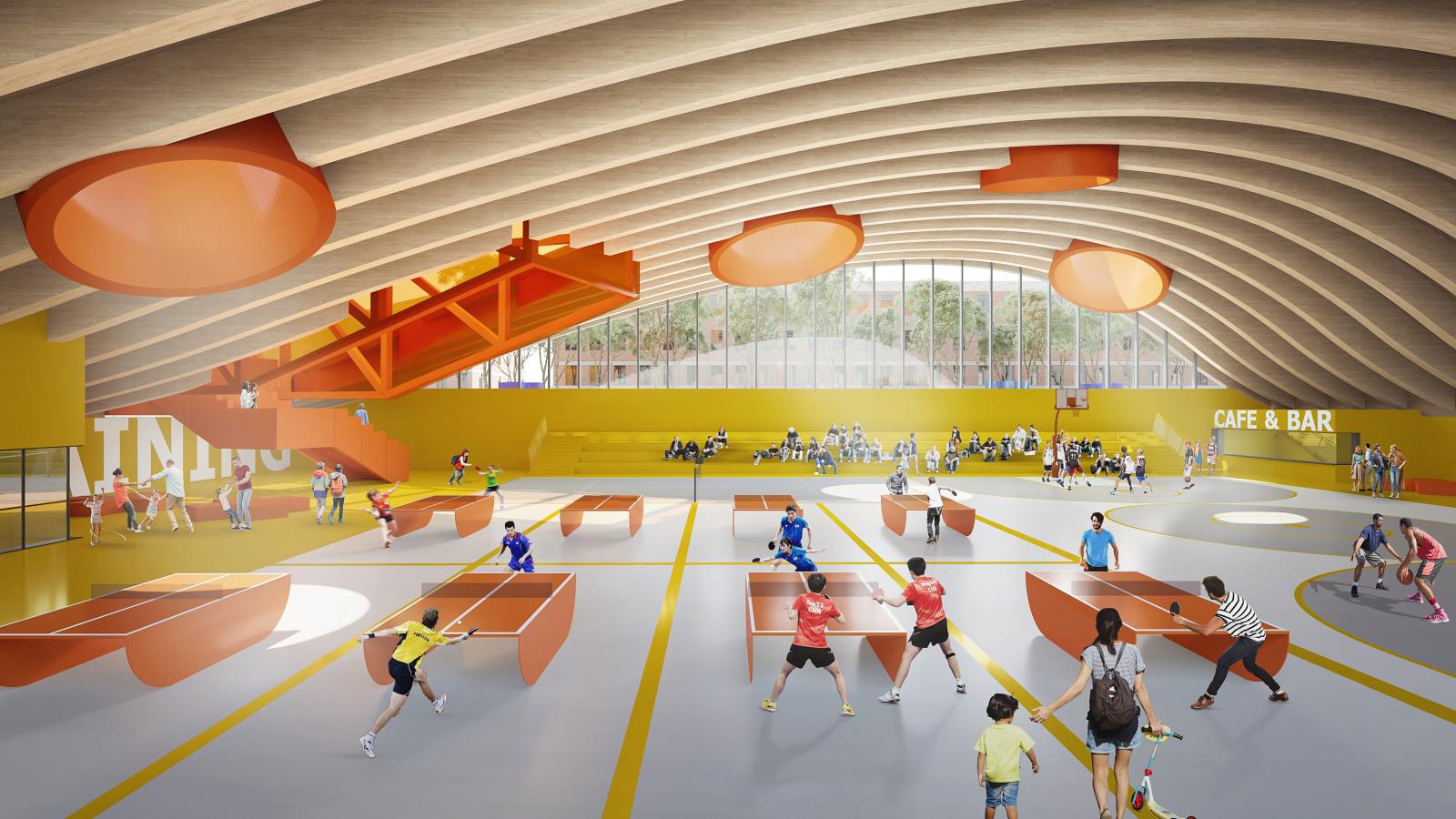Tiexi Workers’ Village was the most representative workers’ compound in New China. Built In 1952 to accommodate factory workers of the industrial capital of Shenyang, it housed 33,000 people in 173 residences.
Complete with municipal institutions, schools, hospitals, and leisure facilities, it became a model development of collective life for the entire country.

With industrial transformation and subsequent community renewal, the area is subject to a comprehensive re-development whose cultural and commercial heart manages to preserve and convey the pivotal idea of community values.
The existing building fabric is characterised by 3-storey blocks surrounding large central courtyards, two of which now become the focus of contemporisation into a tourist, educational, and rich commercial destination:

One site inserts unique retail pavilions into the central space, subdividing one large expanse into a series of animated courtyards.
The new buildings act as multi-level connectors, linking to the old environs by tunnels, stairs, and bridges, creating a human scale environment full of activity.

The industrial legacy is maintained in the surrounding blocks that house exhibitions and historic experiences. On a second elongated site, a hilly landscape embraces outdoor and indoor sports fields as well as a culture stage.
A cantilevering fitness tunnel reaches out towards the existing building structure, engaging the old and the new into a contemporary dialogue.

- Location: Shenyang, Liaoning, China
- Architect: CLOU architects
- Client: Vanke
- Program: Mixed Use
- Size: 16,000 sqm
- Year: 2024
- Images: Courtesy of CLOU architects





